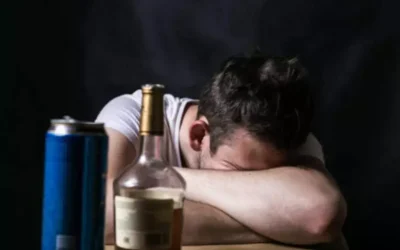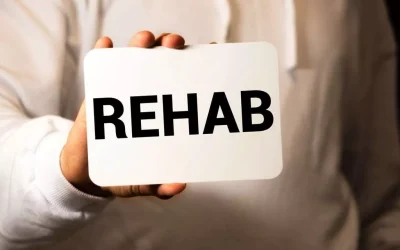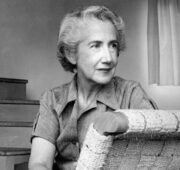Unfortunately, a single lapse can cause you to fall into a full relapse because of something called the abstinence violation effect (AVE). It is not necessarily a failure of self-control nor a permanent failure to abstain from using a substance of abuse. Those in addiction abstinence violation effect treatment or contemplating treatment can benefit from this aspect of relapse prevention. In other words, abstinence violation effects make a single lapse much more likely to turn into a full return to a full relapse into negative behavioral or mental health symptoms.
Saul Shiffman
- It is not necessarily these natural emotions that cause emotional relapse, but how you cope with them, that does.
- One possibility is that lapses occurring after longer periods of abstinence taint successful progress accumulated to that point, call the lapser’s ability to maintain abstinence into question, increase attributions of blame, as well as feelings of guilt.
- Participants used palm-top computers to record AVE data within minutes of the episode, thus avoiding retrospective bias.
- In other words, abstinence violation effects make a single lapse much more likely to turn into a full return to a full relapse into negative behavioral or mental health symptoms.
- Participant recruitment and data collection occurred between October 1997 and February 2000.
It sounds counterintuitive, and it is, but it is a common thought that many people have to recognize to avoid relapse. Celebrating victories is a good thing, but it’s important to find constructive ways to appreciate your sobriety. Researchers Terence T. Gorski and Merlene Miller identified a set of warning signs or steps that typically lead up to a relapse. Over the years, additional research has confirmed that the steps described by Gorski and Miller are reliable and valid predictors of alcohol and drug relapses. But a relapse, sometimes called a “slip,” doesn’t begin when you pick up a drink or a drug.
Abstinence Violation Effect: How Does Relapse Impact Recovery?
Addiction rewires the brain to consider drug use an important source of reward. When you are feeling overwhelmed, your brain may unconsciously crave drugs as a way to help you feel better. But you may have the thought that you need the drug or alcohol to help get you through the tough situation. Unconscious cravings may turn into the conscious thought that it is the only way you can cope with your current situation. You attempt controlled, “social,” or short-term alcohol or drug use, but you are disappointed with the results and experience shame and guilt. You quickly lose control and your alcohol and drug use spiral further out of control.
AVE in the Context of the Relapse Process
According to RPM, each lapse in the process represents a potential target for interventions designed to bolster coping resources and renew commitment to change. However, RPM interventions have generally failed to improve smoking cessation outcomes (Irvin et al., 1999; Lancaster et al., 2006). This may be because RPM interventions have focused on reducing what were seen as negative and counter-productive responses such as self-blame and guilt. We evaluated abstinence violation effects (AVEs) (a constellation of negative reactions to a lapse) following an initial lapse to smoking in 105 recent lapsers, and in temptation episodes from these lapsers and from 35 maintainers. Participants used palm-top computers to record AVE data within minutes of the episode, thus avoiding retrospective bias. Lapses resulted in increased negative affect and decreased self-efficacy; participants also felt guilty and discouraged.
Initial AVE and Resumption of Daily Smoking
In the context of addiction, a breach of sobriety with a single drink or use of a drug has a high likelihood of a full relapse. In conclusion, the abstinence violation effect is a psychological effect that impacts those in recovery, as well as those who are focused on making more positive behavioral choices in their lives. By reframing lapses as learning opportunities and teachable moments, cultivating self-compassion, and seeking support, individuals can navigate these challenges more effectively, increasing their chances of leading a healthier lifestyle. A physical relapse occurs when you take your first drug or drink after achieving sobriety.

Relapse dynamics during smoking cessation: Recurrent abstinence violation effects and lapse-relapse progression

Future studies that incorporate fine-grained, ecologically valid measures with dynamic longitudinal analysis techniques may reveal much more about the subtle processes that drive the link between lapse and relapse outcomes. For example, our data demonstrate that the lapse progression process is highly variable both between individual participants and across momentary circumstances. This suggests that it would be useful to formally model this variation and thereby identify subgroups of subjects who followed similar recurrent survival trajectories. A corresponding extension of this approach would be to identify subgroups of subjects who followed similar AVE response trajectories; e.g., using latent mixture models to identify different trajectories towards relapse versus recovery. Work of this sort may allow us to conceptualize the AVE as a multivariate, latent construct that evolves over the course of the lapse-relapse process. Nearly all other prominent models of addiction and relapse focus on the psychophysiological determinants of drug priming and reinforcement (e.g., Baker et al., 1986; Kalivas & Volkow, 2005; Koob & Le Moal, 1997; Robinson & Berridge, 2003).
Similar content being viewed by others
- It is inevitable that everyone will experience negative emotions at one point or another.
- Our analyses also shed light on the role played by NRT assignment, demonstrating the extent to which nicotine patch treatment prevents progression across a series of repeated lapses.
- The role of pre-lapse abstinence appears to be more subtle, interacting with AVE responses in a way that influences progression to additional lapses.
- Additional hours of prospective abstinence time across each 1-unit change in post-lapse internal attribution of blame, plotted as a function of abstinence duration (days) preceding the lapse.
Regardless, both of these relapse thresholds fall well short of resumption of participants’ pre-quit, “normal” smoking rates, which have been shown to take months and maybe years to reestablish (e.g., Conklin et al., 2005). We also supplemented our pre-specified relapse criterion with a criterion marking the resumption of low-level daily smoking. This provided a more sensitive measure of “routine” smoking that made it possible for us to improve our focus on true abstinence violations. Of note, alternative definitions of low-level resumption did not change the observed pattern of results. The analysis was based on data from a randomized, double-blind, placebo-controlled clinical trial of high-dose nicotine patch for smoking cessation. Clinical outcomes have been reported elsewhere (Shiffman, Ferguson, & Gwaltney, 2006; Shiffman, Scharf, et al., 2006).

Nicotine Replacement Therapy
The steps to relapse are actually changes in attitudes, feelings, and behaviors that gradually lead to the final step, using a drink or a drug. Participants received two sessions of cognitive-behavioral treatment prior to quit day, one on the designated quit day, and three thereafter. Treatment took a behavioral-psychoeducational approach with strong emphasis on providing a supportive group environment (e.g., Brown, 2003). Jim is a recovering alcoholic who successfully abstained from drinking for several months. One day, when he was faced with a stressful situation, he felt overwhelmed, gave in to the urge, and had a drink.
- One day, when he was faced with a stressful situation, he felt overwhelmed, gave in to the urge, and had a drink.
- As an example, when out with friends at their favorite hangout, someone with alcohol use disorder may feel like having a drink.
- You might feel like something is wrong but can’t identify exactly what it is.
- There may be an internal conflict between resisting thoughts about drugs and compulsions to use them.

















